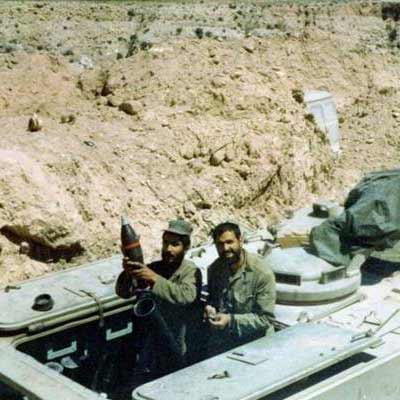Operation Fath-4
Azamsadat Hosseini
236 بازدید
The ground forces of the Islamic Revolutionary Guard Corps, under the supervision of the Ramadan Base and with the cooperation of Iraqi opposition factions, carried out Operation Fath-4 in February 1987. This operation was carried out 70 kilometers within Erbil Province, Iraq.
The success of Operation Fath-3, which was carried out on November 12, 1986, paved the way for the implementation of Operation Fath-4 in northern Iraq. This operation was conducted while the border areas of Iran and Iraq were covered with snow, making it very difficult to provide assistance and support to the operating forces.[1]
The purpose of this operation was to destroy the Iraqi military and economic facilities on the northern front. So, in order to strike a blow to Iraq's military, an army base in each of Erbil Province, Ravanduz and Divana general areas were chosen.[2]
This operation was carried out in two stages on February 12, 1987, with the codename of Ya Allah! In the first stage, which was carried out in an operational area of 100 square kilometers, the large radar facilities located at Kurk, Erbil Province, 70 kilometers deep into Iraq, were destroyed. This infiltration operation continued with gunfire on the Khalifa Barracks in the Diyana area. The Iranian forces also set fire to seven Iraqi tanks in this stage. After, the Iranian forces carried out the operation successfully by shooting at the motor park and sensitive centers of the 5th Iraqi Corps in Ravanduz. Firing on the Bapshtian Barracks in the north of Ravanduz caused a lot of damage to the enemy. The damage to the military and economic centers of the cities of Qadasadiq, Ravanduz, Khalifa, and Divana, was one of the major achievements of the first stage of Operation Fatah-4. Additionally, the headquarters of the Iraqi 23rd Division came under heavy fire from the Iranian forces during this stage.[3]
The second stage of this operation was carried out on March 14, 1987, in an operational area of 300 square kilometers and at a depth of 70 kilometers into Iraq. At this stage of the operation, the cooperation of the Patriotic Union of Iraqi Kurdistan and the forces under the command of the Ramadan Base, consisting of the special brigade of the ground forces of the Islamic Revolutionary Guard Corps, was remarkable. In the second stage, the Iranian forces inflicted heavy blows and losses on the Iraqi forces. The headquarters of the 5th Iraqi Corps in the Divana area was destroyed by heavy artillery fire, while the communication center of the 5th Iraqi Corps was also destroyed. The motor park facilities of the 5th Iraqi Corps, several government units in the city of Qadasadiq, and 23 Iraqi military bases in the Divana plain and Ravanduz region were destroyed. In the Ravanduz area, the intelligence center and the security organization, the headquarters of a battalion, the police station, the club of Iraqi military officers, and the military and logistics barracks were destroyed. In the Divana area, two military barracks in the south of the area, Hamiyeh Barracks, a security circle, an intelligence and police organization, the center of Iraqi military forces and facilities in the city, as well as Iraqi missile and anti-aircraft sites in the plain, were among the facilities destroyed in the second stage of Operation Fath-4.
The facilities of the Ravanduz Power Plant, which were destroyed at this stage, led to a complete power outage in this city. In this phase of the operation, more than 1150 Iraqi forces were killed and wounded, of which 150 were officers and non-commissioned officers. Also, dozens of Iraqi tanks, personnel carriers and military vehicles were destroyed.[4]
[1] Sadeghi, R., Guide Atlas 12: West Azerbaijan in the war with counter-revolution and sacred defense, Tehran: Islamic Revolutionary Guard Corps, Sacred Defense Documentation and Research Center, 2011, pp. 200 and 201.
[2] Habibi, A., Record of operations of the Islamic Guards in the eight years of Holy Defense, Tehran: Islamic Revolutionary Guard Corps, Department of Public Relations and Publications, Chapter 5, 2004, pp. 155 and 156.
[3] Ibid, p. 155.
[4] Islamic Republic newspaper, No. 2248, March 5, 1987, p. 2.



